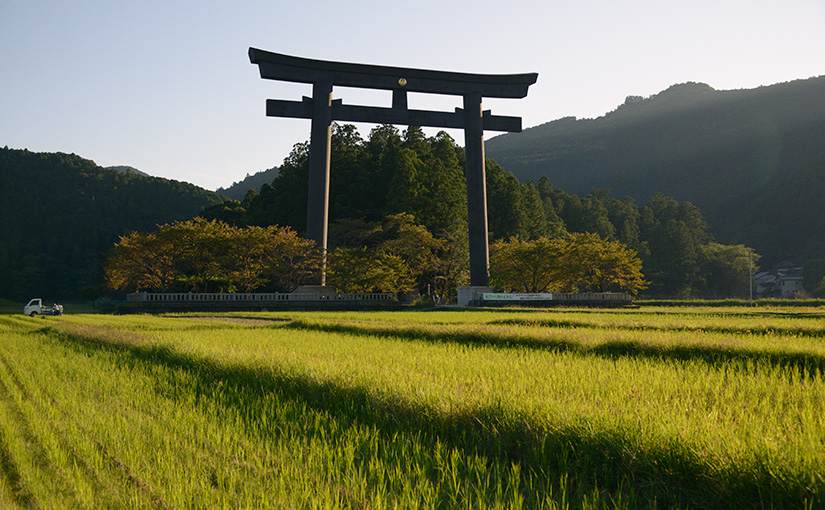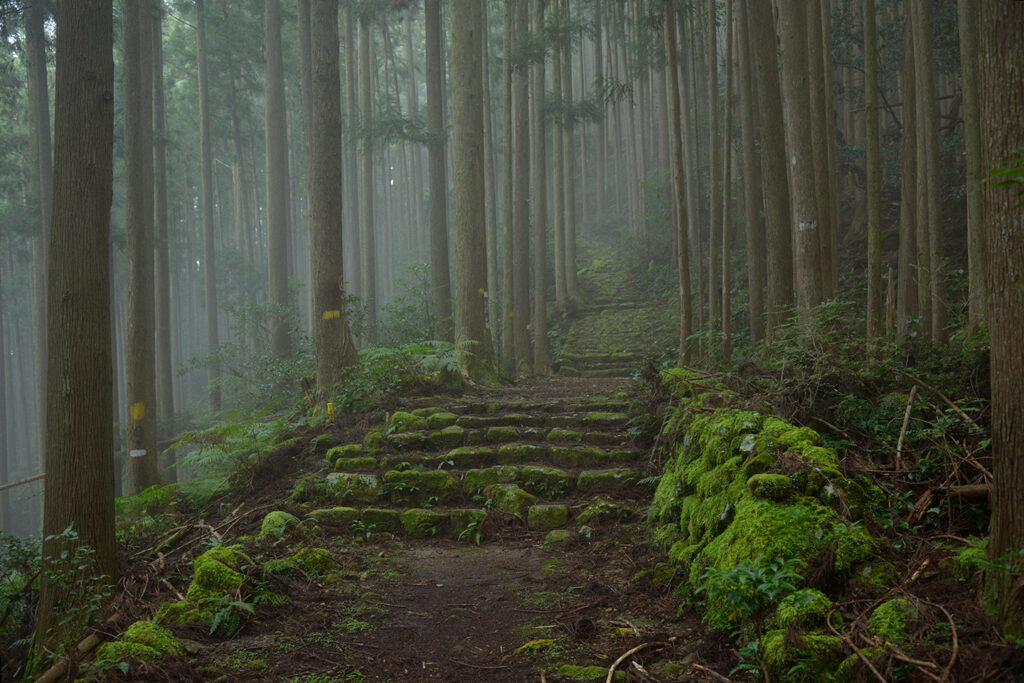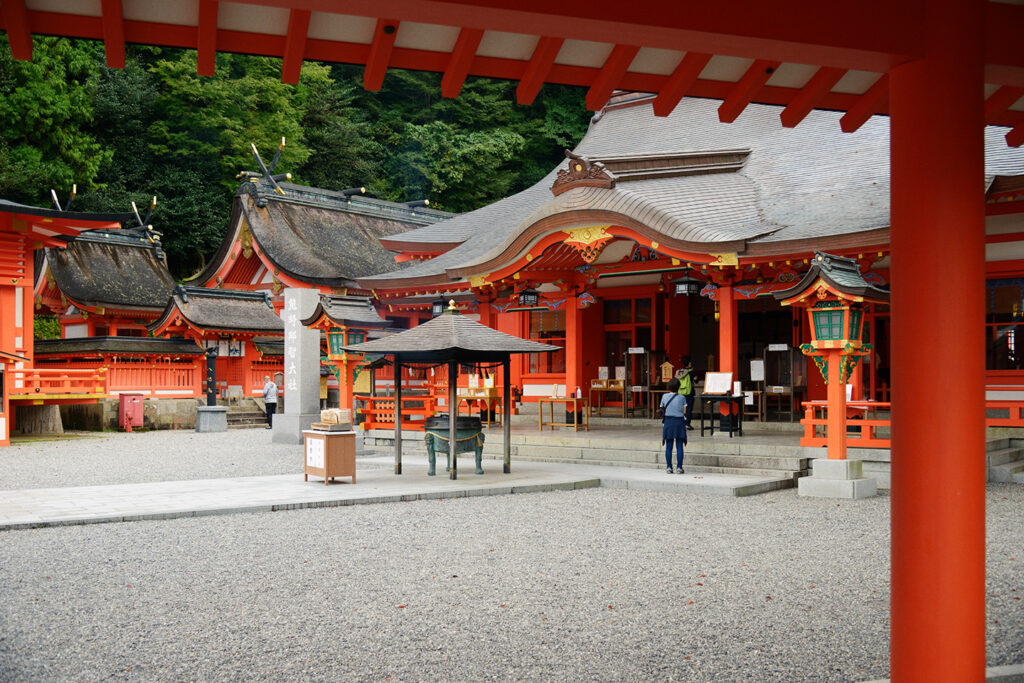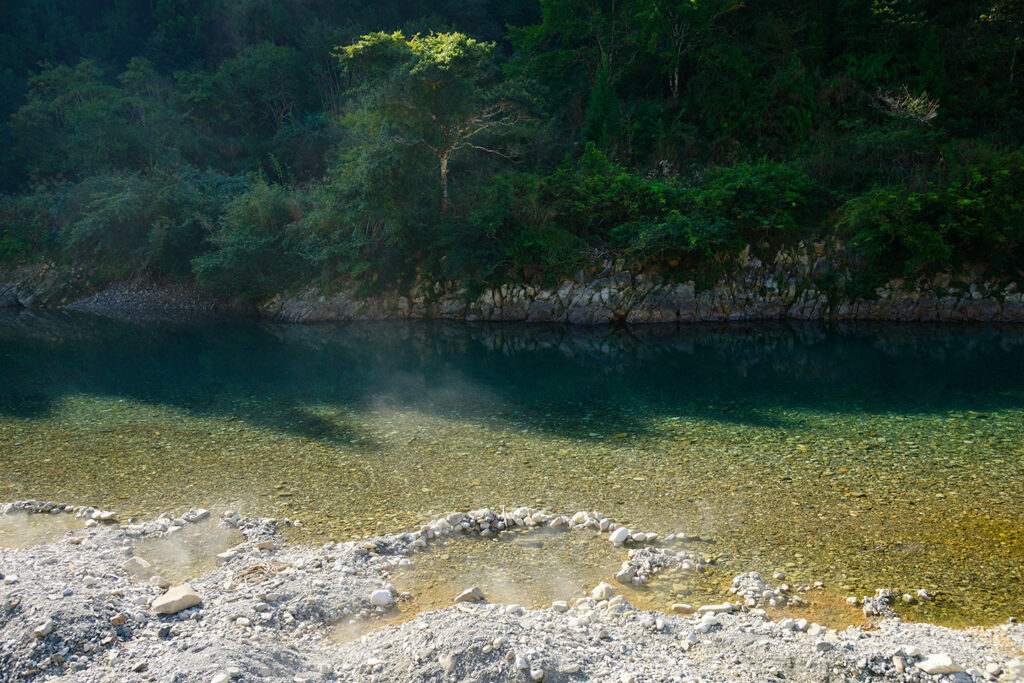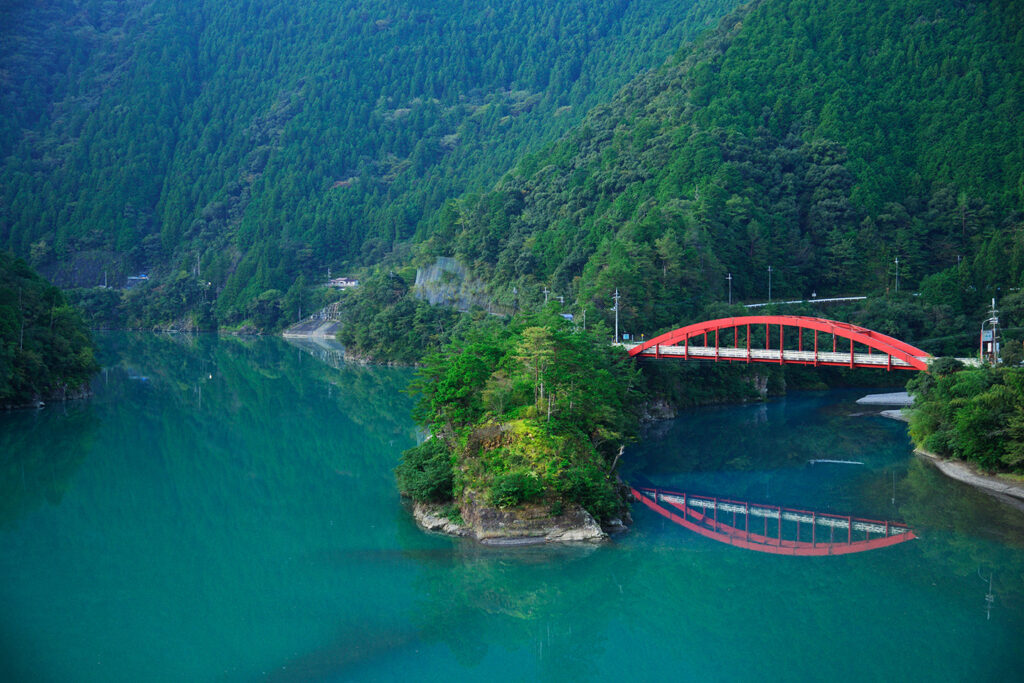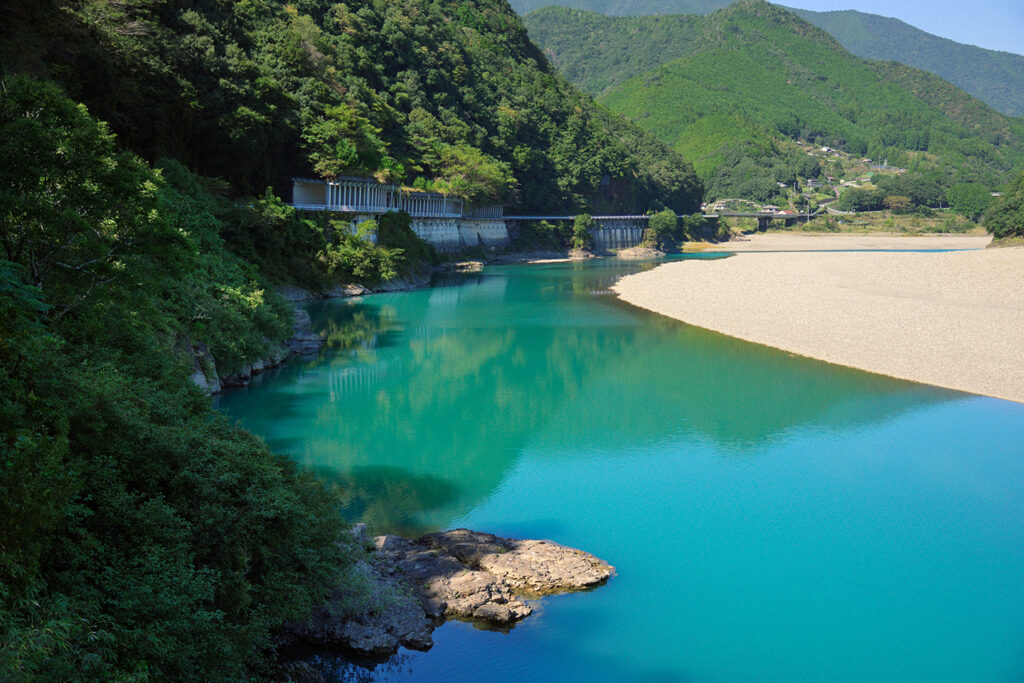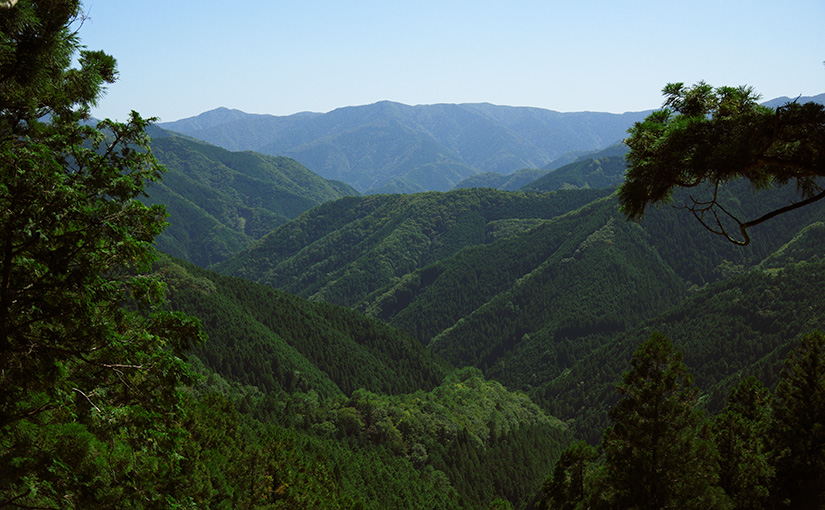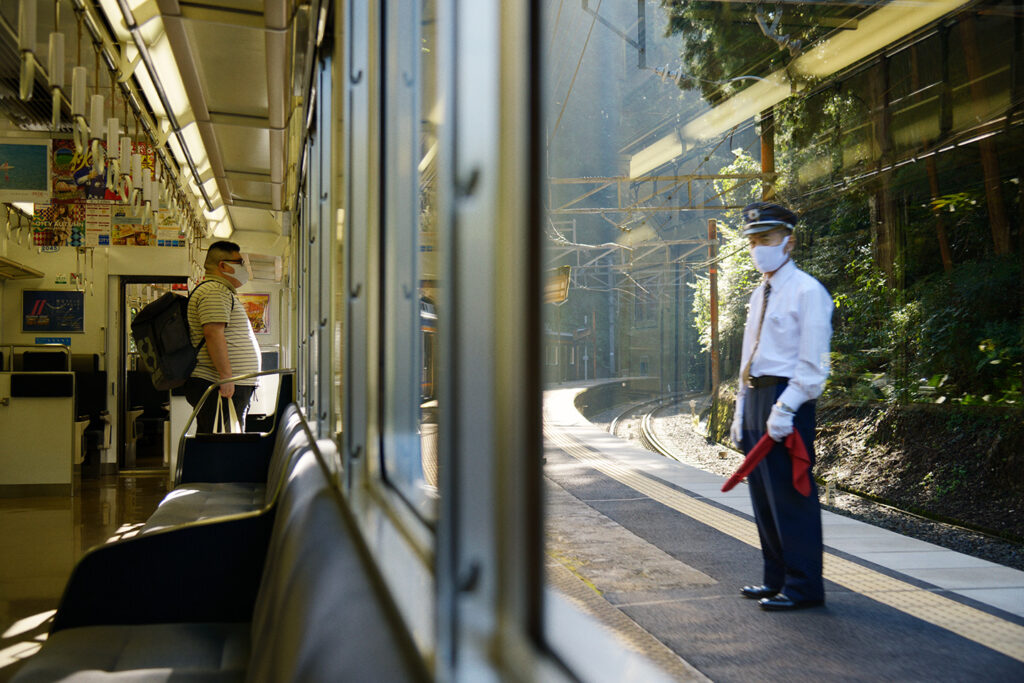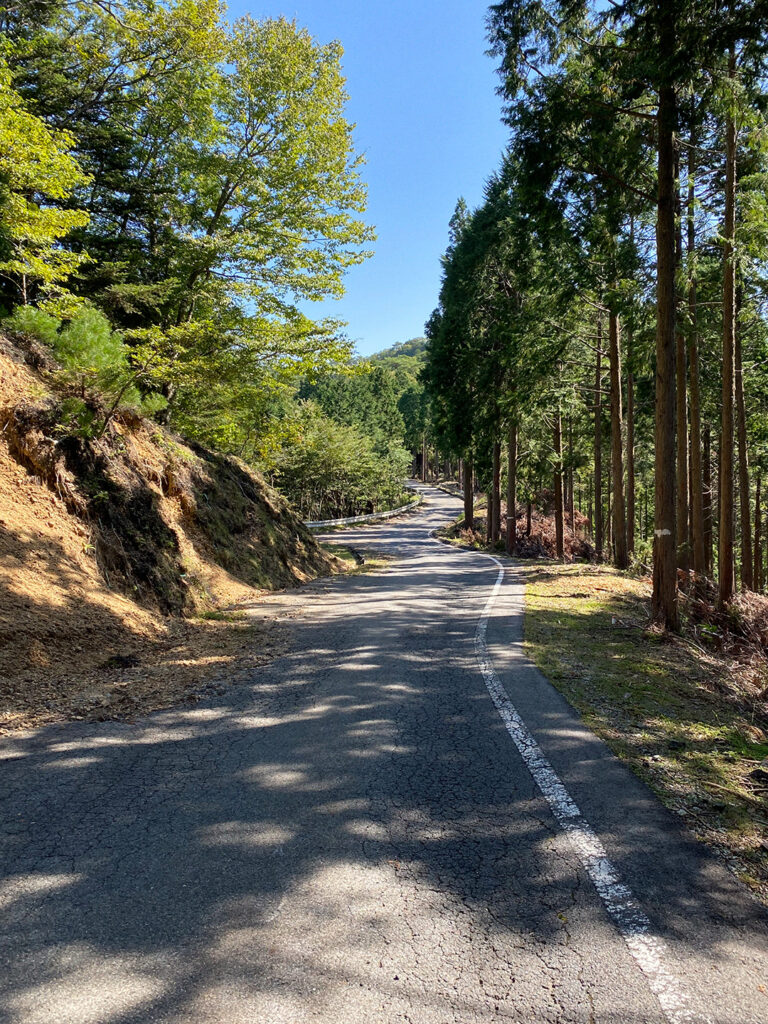Friday the 8th of October 2021
I started the day slowly, as I had decided to finish the walk by yesterday. Being slow proved to be a bit of a mistake as I missed a train, and there was quite a bit of time until the next one. I decided to stroll through the quiet town of Katsuura for a while.
For those considering public transport to Shingu for visiting “Kumano Hayatama Taisha,” I would recommend going to Shingu on the same day after visiting Nachisan. Instead of staying in Katsuura, make sure to catch the last train from Nachi station, which is quite early, at 17:22 at the time of writing this blog. Then you might be able to put your feet in the ocean while looking at the sunset, and the next day you can walk to the shrine without carrying big luggage, leaving it at the accommodation.
However, I think walking the Kumano Kodo Iseji may not be a bad choice. Looking from the train window, the seascape was truly beautiful. I got off the train at Shingu station and headed to the shrine. It was another warm day that made me rather thirsty and uncomfortable, especially in that somewhat sleepy town. Yet, traffic was busy, and there were almost no pavements and no trees. Later, I realised that parallel to the street I walked, there is a pedestrian-only shopping street with a roof, yet it is actually quite pedestrian compare to the other livelier towns. The lack of historical buildings not only affects this town but many towns in Japan, creating a lack of character. As a tourist, I could not enjoy much and didn’t want to stay longer nor explore. The municipal government must understand how important it is to preserve and not disturb the good historical aesthetic, especially if they expect more tourism.
After visiting the shrine, I saw an old house, an Unagi (eel) restaurant, with a nice smoky aroma wafting out. I decided to have a slightly early but expensive lunch. While waiting for the food to be served, more customers arrived, and soon the small restaurant became full. Apparently, it is a quite popular place. I was lucky to get a table without waiting, but I felt somewhat unwelcome because I was alone and occupying a whole table. At the next table, there were two guys, quite large even by Japanese standards. They were almost inhaling the food and talking about what they were going to have next, either ramen or udon. Clearly, they were traveling by car, as I could see the car keys. I do eat slightly more when I walk or cycle I consume more than usual, yet people still need to eat when they drive. And these guys were clearly eating way more than I do. I think someone should find a way to generate electricity from excessive diet, so people can charge their cars. Converting my few thousand Japanese yen into energy, now I can walk to the station.

My plan was to go to Ise by train, then take a night bus to Tokyo. On the map, it looked like a simple one-train ride, but I had to change a couple of times. First at Kii-Nagashima station, where I had a chat with the station manager as he noticed my stick. He told me that he used to trail run, and Kumanokodo Iseji is beautiful with more old paved trails. Back in my head, I thought, “that’s more pain on my foot and knee,” however, it was a good chat, and the waiting time at the empty station passed quickly. Then, after I transferred at Taki station to another train to Ise, it was already dark.
I had never really been interested in hiking or walking trails. That does not mean I hate it. However, somehow I thought about walking the 88, and after that, I felt that I had to walk Kumanokodo.
People tend to think pilgrimage is a religious thing, I does relate to religion in most places. However, religion and belief are one thing; spirituality is another. So anyone can walk to open up individual spirituality. The 88 is a great pilgrimage trail, tough and designed very well over 1200 years, a glimpse of one life cycle. In contrast, I felt that Kumanokodo is after life. You walk through the calm, beautiful Kii Peninsula’s nature, and there is no clear starting point and end.

歩くのは昨日までとしていたので少しゆっくりめな始まり。宿をさっさと出なかったのが原因で電車を逃す、時間があるので街を少し見てみる事にしたが駅前の商店街はとても静かだ。
もし同じ様なルートで那智山から次の日に新宮に電車で行こうと考えているなら、勝浦に一泊するよりも那智山を訪れたその日のうちに新宮まで行く事をお勧めする。次の日の朝に荷物を宿に置いて熊野速玉大社行って来れる。
車窓から海を眺めていると伊勢路を歩くのも良さそうだ。新宮で降りて神社に向かう、閑散とした町でも交通量は多い、歩道はほとんどなく木もないので汗ばんで喉が乾く。少しして平行に屋根付きの商店街があることに気づいた。観光地として古い建物が無いとやはり魅力と価値は下がってしまう。地方自治体は新たな開発、再開発よりも景観保存を重要視すべきだ、景観、外観また内観、素材を保ちつつモダナイズする事もできるはずだ、魅力がないところに観光客はあまり長居はしない。
神社の後に古い建物の鰻屋を見つけた、煙が出てい美味そうな匂いに誘われて少し早く高めの昼にすることにした。注文を待っている間に次から次と客が入り小さな店はすぐにいっぱいになった、ちょうど待ちもせず店に入れたのは運が良かった、一人でテーブルを占有してしまったからか店員はあまりいい気がしなかったのだろうか。隣に座った大きめの二人、この次はラーメンかうどんかと話している間に鰻重がミルミルと飲み込まれていく。テーブルに置かれた鍵から明らかに車で旅している事がわかる、歩いている時、また自転車に乗っている時は当然普段よりエネルギーを使うのでよく食べるが、彼らは明らかに十二分に摂取している様に見える。食べ過ぎたからだから電気を発電し車のバッテリーをチャージする方法を誰か見つけるべきだと思った。私は日本円をエネルギーに交換したのでまた駅まで歩くことにした。
予定では伊勢まで電車、そこらか夜行バスで東京と思っていた、地図で見ると一本で行けそうだったが2回ほど乗り換えなければならなかった。一回めは紀伊長島、人気のあまり無い駅で駅長が話しかけてきた、杖を見て歩いているとわかったらしい、彼はトレイルランニングを以前にしていたらしい、伊勢路は綺麗な石畳が結構残っているとのこと、頭の中で結構足や膝に来てつらそうだと思いながら、そうですか次回は挑戦してみたいですと言う。 そして次に多岐で乗り換え、伊勢に着く頃には暗くなっていた。
トレッキング、ハイキングなどそれまであまり興味を持たなかった、嫌いという事ではなかったが。突然なぜか四国八十八を行ってみようと思った。その後に熊野古道に行かなければと思った。巡礼の旅はやはり宗教的と考えると思う人が多いし、宗教と密接に関係している。私は宗教、信仰と精神性は違ったものだと思う。だから誰もが宗教などに関係なく歩き精神性開くことに挑戦できると思う。四国八十八は、きつく、1200年の間うまくデザインされた道、人生の一周を少し垣間見る事ができたようだ、熊野古道はあの世を垣間見れるのかもしれない長閑な紀伊半島の自然を歩く、明確な始まりも終わりもない。
